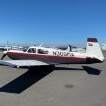Vertical Navigation of Approach Stepdowns for ILS with VNAV - GFC500/GTN750Xi
-
Members Online
- Chris Higgins
- SoccerCA
- bixmooney
- Deb
- Jetdriver
- Ragsf15e
- Kelpro999
- bluehighwayflyer
- M20Cruiser
- Andy95W
- 201er
- MikeOH
- mooneyflyfast
- Mooney in Oz
- JohnnieMKE
- eman1200
- anthonydesmet
- ChuckSchneider
- Echo
- Joe Linnebur
- Joshua Blackh4t
- Stealth Mooney
- pirate
- Sabremech
- Fritz1
- Patrick Horan
- sahaughey
- Sherifferic
- Skates97


Recommended Posts
Join the conversation
You can post now and register later. If you have an account, sign in now to post with your account.